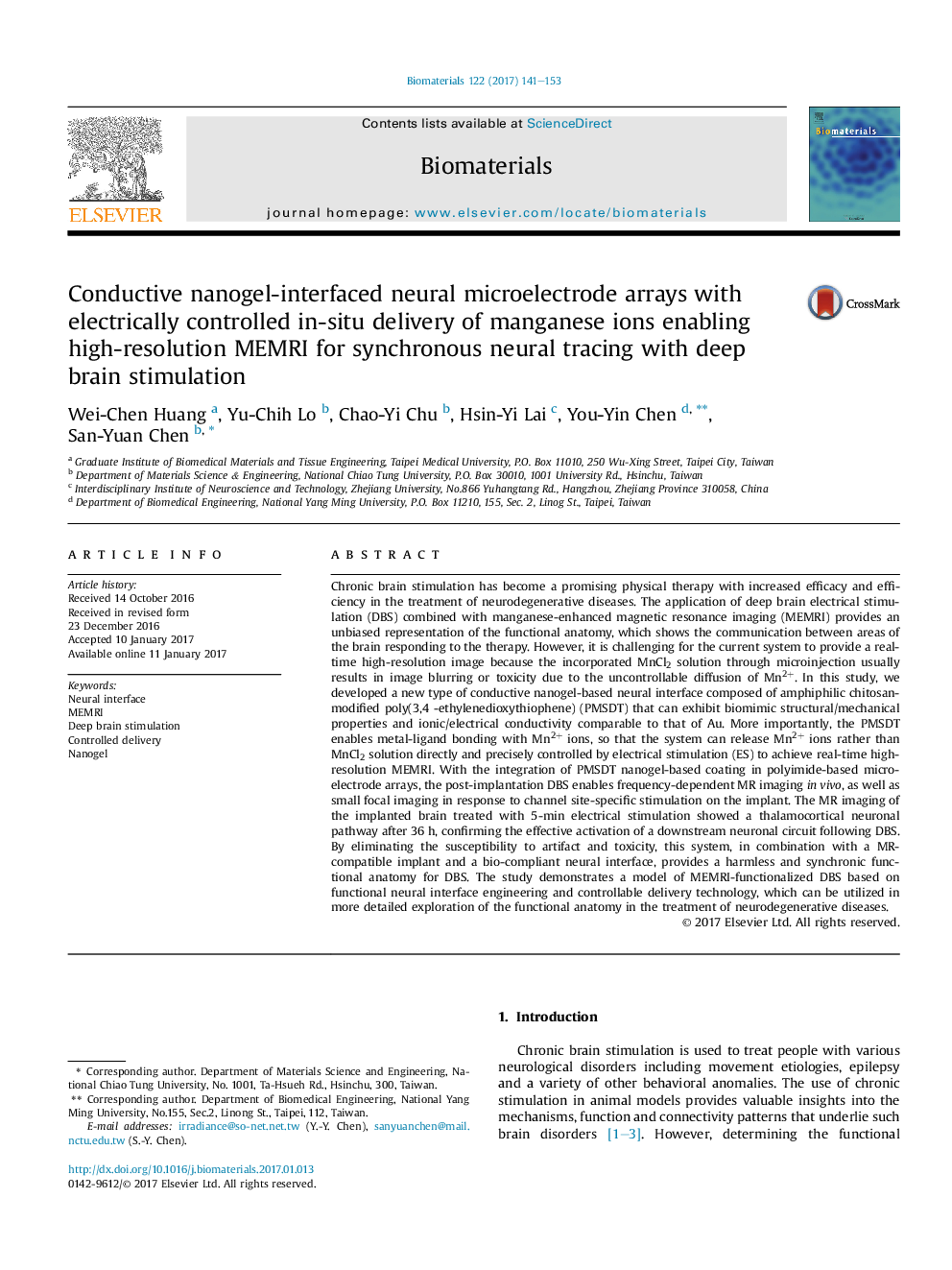| Article ID | Journal | Published Year | Pages | File Type |
|---|---|---|---|---|
| 6450863 | Biomaterials | 2017 | 13 Pages |
Chronic brain stimulation has become a promising physical therapy with increased efficacy and efficiency in the treatment of neurodegenerative diseases. The application of deep brain electrical stimulation (DBS) combined with manganese-enhanced magnetic resonance imaging (MEMRI) provides an unbiased representation of the functional anatomy, which shows the communication between areas of the brain responding to the therapy. However, it is challenging for the current system to provide a real-time high-resolution image because the incorporated MnCl2 solution through microinjection usually results in image blurring or toxicity due to the uncontrollable diffusion of Mn2+. In this study, we developed a new type of conductive nanogel-based neural interface composed of amphiphilic chitosan-modified poly(3,4 -ethylenedioxythiophene) (PMSDT) that can exhibit biomimic structural/mechanical properties and ionic/electrical conductivity comparable to that of Au. More importantly, the PMSDT enables metal-ligand bonding with Mn2+ ions, so that the system can release Mn2+ ions rather than MnCl2 solution directly and precisely controlled by electrical stimulation (ES) to achieve real-time high-resolution MEMRI. With the integration of PMSDT nanogel-based coating in polyimide-based microelectrode arrays, the post-implantation DBS enables frequency-dependent MR imaging in vivo, as well as small focal imaging in response to channel site-specific stimulation on the implant. The MR imaging of the implanted brain treated with 5-min electrical stimulation showed a thalamocortical neuronal pathway after 36 h, confirming the effective activation of a downstream neuronal circuit following DBS. By eliminating the susceptibility to artifact and toxicity, this system, in combination with a MR-compatible implant and a bio-compliant neural interface, provides a harmless and synchronic functional anatomy for DBS. The study demonstrates a model of MEMRI-functionalized DBS based on functional neural interface engineering and controllable delivery technology, which can be utilized in more detailed exploration of the functional anatomy in the treatment of neurodegenerative diseases.
